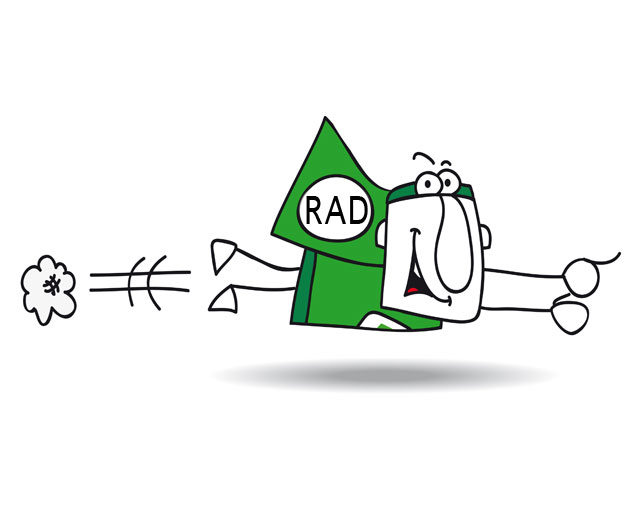Rapid Application Development: Moving the Problem to the Right
Wednesday, January 14, 2015

|
Sean Allen |
We hear it all the time: As the development queue grows, so does the pressure on IT to deliver. Managers and executives want mobile applications yesterday, and IT is struggling to simply keep its head above water. As a result, many IT organizations are on a mission to reduce development time. Unfortunately, we’ve found that this only serves to move the problem to the right, so to speak. Let me explain.
Initially, at least, the choke point in application delivery appears to be the development team. Months pass, the backlog grows and the business demands to know why apps haven’t seen the light of day. Hand coding a mobile application for one platform can take weeks, even months – never mind coding it for multiple platforms. Organizations try to solve this problem by automating manual coding processes with rapid application development (RAD) tools. And it helps – to a degree.
RAD tools enable development teams to build applications faster so they can move on to the next project. But it doesn’t solve the ultimate goal – getting applications to customers faster – because applications must still be tested and the infrastructure configured. None of this is fully automated. The plethora of tools available for trying to implement continuous integration and continuous delivery must be manually configured and integrated using scripts. So now operations becomes the choke point in application delivery.
But the problem doesn’t end there, either. In some ways, it only begins when the application goes into production. As soon as they begin using an application, users have the expectation that improvements will be many and often. This puts the onus back on development to improve the mobile experience, deliver new functionality and fix bugs on existing mobile apps – in addition to developing new ones. The bottleneck has now come full circle.
Looking beyond development
The key to preventing these bottlenecks is to consider the application lifecycle as a whole. In addition to accelerating the development process using a no-code or low-code platform, IT organizations should automate the entire delivery process as well - from development, through test, and into production. A solution that combines all of these into Rapid Application Delivery ensures that no single point in the application lifecycle becomes a choke point. A Rapid Application Delivery platform that understands the dependencies between all apps and infrastructures can cleanly automate, verify and govern the delivery pipeline with single-click speed and efficiency.
Automating the entire application lifecycle also helps IT organizations transition to/embrace a DevOps culture. Because Development and Operations teams don’t talk to one another, share the same goals or use the same tools, DevOps can become particularly challenging when it comes to change management. A Rapid Application Delivery platform addresses these challenges. One platform controls the entire change management process, making it simple for Development and Operations to have a role inside of the platform and limiting potential errors that result in a failure. In short, a Rapid Application Delivery platform facilitates DevOps efforts without increasing risk.
A Rapid Application Delivery platform offers another interesting benefit. It can actually increase application adoption. Oftentimes users will open an application, use it once or twice and then decide whether to continue to use the app based on whether it is updated regularly. Users will stick with even a mediocre mobile app if they know that it is updated frequently and continually improving.
The successful and efficient delivery of a modern application requires that IT organizations consider the entire application lifecycle. Automating development at the expense of operations only serves to move the problem to the right and doesn’t address the ultimate goal: to get apps into the hands of the user. Adopting a DevOps mindset and automating the entire lifecycle with the help of a Rapid Application Delivery platform can do just that.
About Sean Allen – Director of Product Strategy, OutSystems
Sean Allen has over 20 years experience in the fields of software development and implementation, and operations. He began his career as an architect at IBM, then moving into management roles at Tivoli Systems, salesforce.com, Mercury Interactive and VMware, before joining OutSystems. Currently, his energy is being poured into changing the way the world thinks about designing, developing, and delivering beautifully functional multi-device applications while injecting unprecedented efficiency into a status-quo that threatens to swallow enterprise IT whole. He holds a BS in Computer Science from Auburn University.
Read more: http://www.outsystems.com/platform
This content is made possible by a guest author, or sponsor; it is not written by and does not necessarily reflect the views of App Developer Magazine's editorial staff.

Become a subscriber of App Developer Magazine for just $5.99 a month and take advantage of all these perks.
MEMBERS GET ACCESS TO
- - Exclusive content from leaders in the industry
- - Q&A articles from industry leaders
- - Tips and tricks from the most successful developers weekly
- - Monthly issues, including all 90+ back-issues since 2012
- - Event discounts and early-bird signups
- - Gain insight from top achievers in the app store
- - Learn what tools to use, what SDK's to use, and more
Subscribe here




_cptybzmh.jpg)








